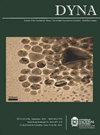Prompt Engineering: a methodology for optimizing interactions with AI-Language Models in the field of engineering
Q3 Engineering
引用次数: 0
Abstract
ChatGPT is a versatile conversational Artificial Intelligence model that responds to user input prompts, with applications in academia and various sectors. However, crafting effective prompts can be challenging, leading to potentially inaccurate or contextually inappropriate responses, emphasizing the importance of prompt engineering in achieving accurate outcomes across different domains. This study aims to address this void by introducing a methodology for optimizing interactions with Artificial Intelligence language models, like ChatGPT, through prompts in the field of engineering. The approach is called GPEI and relies on the latest advancements in this area; and consists of four steps: define the objective, design the prompt, evaluate the response, and iterate. Our proposal involves two key aspects: data inclusion in prompt design for engineering applications and the integration of Explainable Artificial Intelligence principles to assess responses, enhancing transparency. It combines insights from various methodologies to address issues like hallucinations, emphasizing iterative prompt refinement techniques like posing opposing questions and using specific patterns for improvement. This methodology could improve prompt precision and utility in engineering.提示工程:一种在工程领域优化与人工智能语言模型交互的方法
ChatGPT是一个多功能的会话人工智能模型,可以响应用户输入提示,在学术界和各个领域都有应用。然而,制作有效的提示可能具有挑战性,会导致潜在的不准确或上下文不适当的响应,这强调了提示工程在不同领域实现准确结果的重要性。本研究旨在通过工程领域的提示,引入一种方法来优化与人工智能语言模型(如ChatGPT)的交互,从而解决这一空白。该方法被称为GPEI,依赖于该领域的最新进展;它由四个步骤组成:定义目标,设计提示,评估响应,迭代。我们的建议涉及两个关键方面:在工程应用的快速设计中包含数据,以及集成可解释的人工智能原则来评估响应,提高透明度。它结合了来自各种方法的见解来解决诸如幻觉之类的问题,强调迭代提示改进技术,如提出相反的问题和使用特定的模式进行改进。该方法可以提高工程中的快速精度和实用性。
本文章由计算机程序翻译,如有差异,请以英文原文为准。
求助全文
约1分钟内获得全文
求助全文
来源期刊

Dyna-Colombia
工程技术-工程:综合
CiteScore
1.30
自引率
0.00%
发文量
0
审稿时长
4-8 weeks
期刊介绍:
The DYNA journal, consistent with the aim of disseminating research in engineering, covers all disciplines within the large area of Engineering and Technology (OECD), through research articles, case studies and review articles resulting from work of national and international researchers.
 求助内容:
求助内容: 应助结果提醒方式:
应助结果提醒方式:


